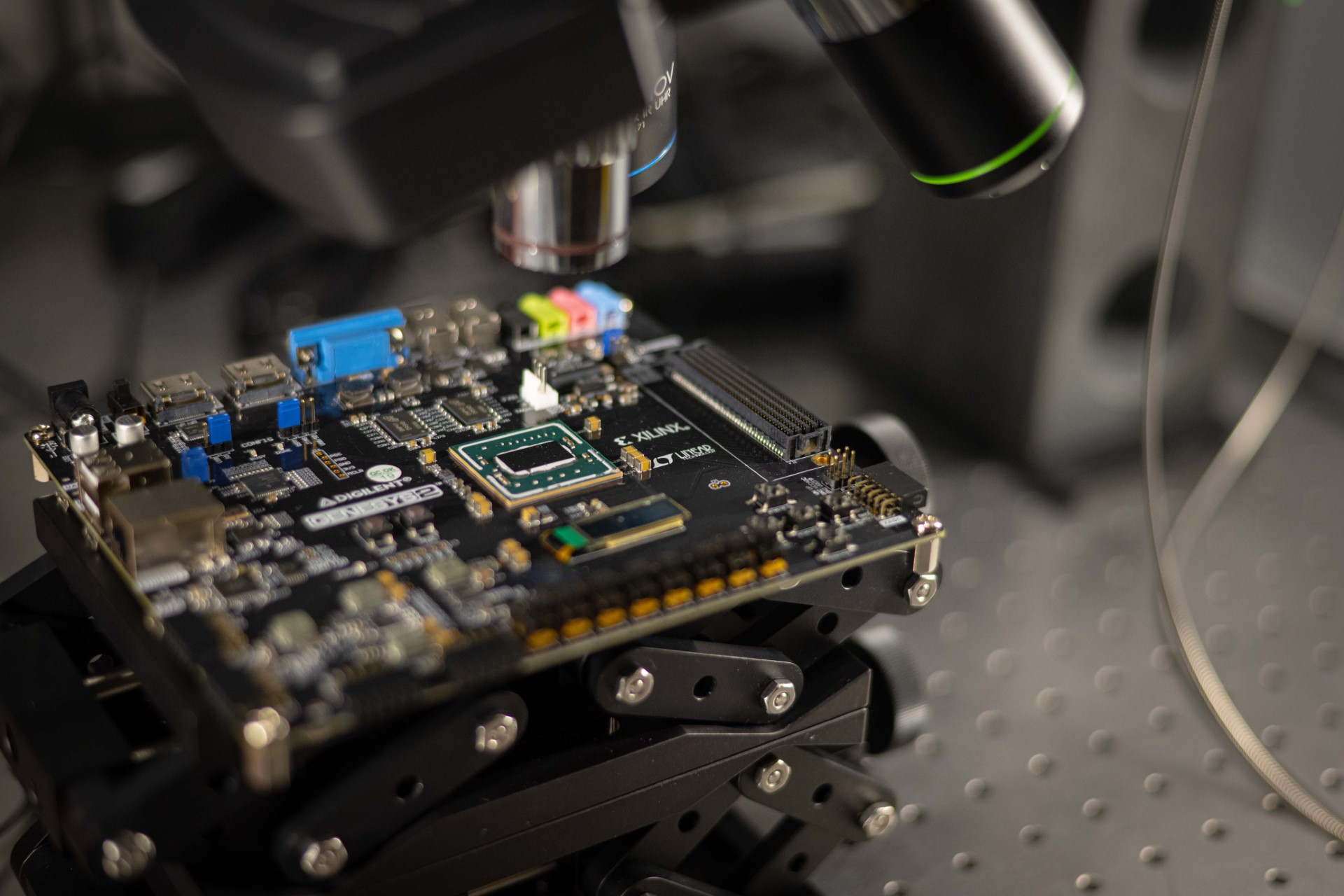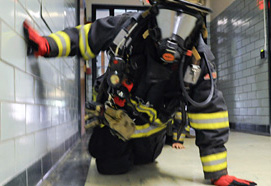WORCESTER, Mass.– October 29, 2008 – Recognizing the nationwide critical need for technology that can save the lives of first responders by accurately tracking their location inside buildings, the Department of Homeland Security's Science and Technology TechSolutions Program has awarded Worcester Polytechnic Institute (WPI) $430,000. The announcement of this award was made today at the 10th Annual Technologies for Critical Incident Preparedness Conference and Exposition in Chicago. It was also announced that, with this funding, WPI will continue to develop its own groundbreaking technology and will also conduct a national test of all existing indoor tracking and monitoring systems. The test will be administered by the U.S. Army Natick Soldier Research, Development, and Engineering Center (NSRDEC) in Natick, Mass., next spring.
Presented by the U.S. Departments of Justice, Homeland Security, and Defense and drawing 1,500 attendees, the Technologies for Critical Incident Preparedness conference is a showcase for technology and training tools currently available or in development for the emergency responder community, and a forum for the emergency responders to discuss best practices. WPI was invited to participate in a conference session on position location technology chaired by Jalal Mapar, program manager for the Department of Homeland Security’s Science and Technology Directorate. David Cyganski, WPI professor of electrical and computer engineering, shared the results of the university’s Third Annual Workshop on Precision Indoor Personnel Location and Tracking for Emergency Responders, held in August 2008 and attended by more than 100 leaders from government, industry, academia, and the first responder community.
Indoor location technology is designed to make it possible to quickly locate and rescue firefighters (and other members of the first responder community such as EMTs, police, and soldiers) who become lost, disabled, or trapped inside a building, while physiological monitoring systems alert incident commanders when firefighters are in distress—especially when their stress levels put them at risk of a heart attack. A June 2008 report by the U.S. Fire Administration (USFA) identified stress or over-exhaustion and becoming lost or disoriented inside buildings as two of the top three leading causes of firefighter fatalities in 2007.
About WPI’s Precision Personnel Technology
With more than $4 million in support from the U.S. Department of Justice, WPI has been working for five years on a precision indoor location system that uses advanced radio frequency technology and algorithms borrowed from synthetic aperture radar to pinpoint the three-dimensional location of a first responder wearing a special transmitter to within one foot. A $1 million grant from the Department of Homeland security in 2007 funded the integration of physiological monitoring capability into this system. This integration includes a vest made by Foster Miller Co. that monitors heart rate, respiration, body temperature, and posture, and a wireless pulse oximeter designed by WPI researchers that measures pulse, respiration, and blood oxygenation.
The DHS funds will permit the WPI research team to further explore enhancements designed to overcome known limitations of the existing radio-frequency and radar-based tracking technology. The team will explore augmenting the system with inertial navigation devices or other technologies that are not affected by shielding or reflectors and that can work in concert with the existing system to provide continuous, accurate location information under a wide range of building and environmental conditions.
About the Testing
To avoid a conflict of interest, WPI’s systems will not be included in the national test, which will be conducted by NSRDEC and WPI in Boston in the spring of 2009. The WPI research team will begin work this year by cooperating with NSRDEC to identify the types of technologies to be tested and developing a testing protocol. The protocol will be based on tests conducted during WPI’s national workshop on indoor personnel location and physiological monitoring in August 2008 (see below), but will likely include a more rigorous evaluation conducted over a two- to three-day period.
WPI’s Leadership in Precision Personnel Location Technology
Three years ago, WPI researchers launched the first national scientific meeting on indoor personnel location and physiological monitoring. The annual workshop attracts the top research groups from government, academic, and industry, who discuss the state of the field and current challenges, and demonstrate their technology. The meeting also attracts members of the first responder community, who provide a real-world perspective on the requirements of first responders and express the urgent need for reliable and affordable location and monitoring technology.
At the 2008 workshop, a day was set aside to permit developers to put their location and monitoring systems through their paces under realistic conditions. The tests used a scenario devised and executed by the Worcester (Mass.) Fire Department (WFD), in which a search team entered WPI’s Atwater Kent Laboratories building to look for a lost and unresponsive firefighter. The search teams were aided, in turn, by three location systems, which used various technologies to continuously monitor the position of the firefighters, and two homing systems, which zeroed in on a signal emitted by a transmitter worn by the lost firefighter.
WPI’s location and physiological status monitoring system and a WPI-developed homing system called “the Mantenna” fared particularly well. Both systems led the search team directly to the firefighter. The WFD representatives said the system would have allowed the search team to reach the firefighter in one session, without the need to refresh their air packs. The Mantenna not only led the search team to the right room, but to the best door to enter to reach the firefighter.



